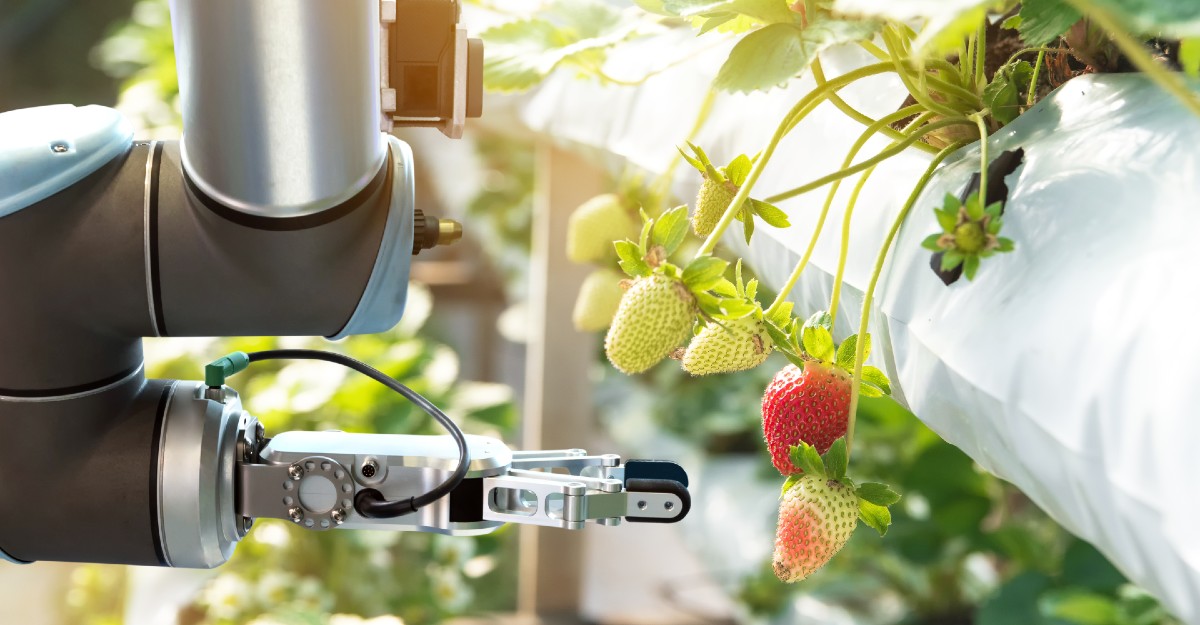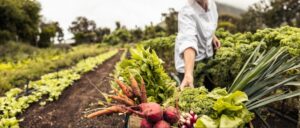Feeding the world’s growing population is an immense challenge that requires innovative solutions. With the global population projected to reach 9.7 billion by 2050, it is crucial to explore the latest advancements in food and agriculture. These innovations not only address the increasing demand for food but also tackle sustainability, food waste, and food security concerns. In this blog, we will delve into the exciting world of food and agriculture innovations and discover how they are shaping the future of feeding the world.
The Role of Technology in Food and Agriculture
Technology plays a pivotal role in revolutionizing food and agriculture practices. One notable advancement is precision farming, which utilizes data-driven technologies and IoT (Internet of Things) devices to optimize farming processes. Farmers can analyze soil composition, moisture levels, and crop health, allowing them to make informed decisions regarding irrigation, fertilization, and pest control. This precision approach helps improve crop yields and minimizes resource wastage.
Another remarkable innovation is vertical farming and urban agriculture. By utilizing vertical space and controlled environments, farmers can grow crops in urban areas, reducing the need for extensive land and transportation costs. Vertical farming relies on artificial lighting, hydroponic systems, and climate control to cultivate a variety of crops year-round. This method enhances productivity and reduces the environmental footprint associated with traditional agriculture.
Furthermore, robotics and automation have emerged as game-changers in farming. Autonomous robots can perform tasks such as planting seeds, harvesting crops, and monitoring plant health. These robotic systems increase efficiency, reduce labor costs, and allow farmers to focus on more complex tasks, ultimately contributing to higher yields and sustainable farming practices.
Sustainable Farming Practices
As environmental concerns escalate, sustainable farming practices are gaining traction. Organic farming and regenerative agriculture prioritize soil health, biodiversity, and natural pest management. By avoiding synthetic pesticides and fertilizers, organic farmers aim to produce nutritious food while minimizing harm to ecosystems. Regenerative agriculture goes a step further by focusing on soil regeneration through practices like cover cropping and rotational grazing, which enhance soil fertility and carbon sequestration.
In addition to organic farming, alternative practices like hydroponics and aquaponics are gaining popularity. Hydroponics involves cultivating plants in nutrient-rich water without soil, while aquaponics combines hydroponics with fish farming. These systems are highly efficient in water usage, require less space, and can be implemented in urban areas. Such alternative farming methods offer great potential for sustainable food production, especially in regions with limited arable land.
Genetic Engineering and Biotechnology
Genetic engineering has revolutionized crop improvement and productivity. Genetically modified organisms (GMOs) have been engineered to possess desirable traits such as resistance to pests, diseases, and harsh environmental conditions. These traits enable farmers to cultivate crops more efficiently, reduce pesticide usage, and increase yields. However, GMOs have sparked controversies regarding safety, environmental impacts, and consumer acceptance. Ongoing research and transparent communication are crucial in navigating the complexities surrounding GMOs.
Biotechnology continues to push the boundaries of crop improvement. Techniques like gene editing allow precise modifications to a plant’s DNA without introducing foreign genes. This technology holds great promise for creating crops with enhanced nutritional content, longer shelf life, and improved resistance to diseases. As biotechnology advancements progress, they offer exciting prospects for meeting the nutritional needs of a growing population.
Food Waste Reduction and Food Security
Food waste is a significant global issue that affects food security. Approximately one-third of the world’s food production goes to waste, exacerbating hunger and environmental degradation. Innovative solutions are being developed to combat this problem. For instance, advancements in post-harvest technologies, such assmart packaging and storage systems, help extend the shelf life of perishable foods, reducing spoilage and waste. Additionally, improved supply chain management and logistics enable better coordination between producers, distributors, and retailers, minimizing food loss during transportation and storage.
Creative approaches to food waste management and redistribution are also emerging. Food recovery organizations rescue surplus food from farms, restaurants, and supermarkets and redistribute it to those in need. Technology platforms and mobile apps connect food donors with local charities and food banks, streamlining the process of food redistribution and reducing waste.
Furthermore, technology plays a crucial role in preventing food waste at the consumer level. Smart kitchen appliances, such as smart refrigerators and meal planning apps, help individuals track their food inventory, manage expiration dates, and make more informed purchasing decisions. These tools promote responsible consumption and reduce household food waste.
By addressing food waste through innovative solutions, we can make significant strides towards achieving global food security and ensuring that food reaches those who need it most.
Alternative Protein Sources
The growing demand for protein, coupled with sustainability concerns, has spurred the development of alternative protein sources. One of the most promising innovations is cultured meat, also known as lab-grown or cell-based meat. This technology involves cultivating animal cells in a lab and producing meat without the need for traditional animal agriculture. Cultured meat has the potential to reduce the environmental impact of livestock farming, decrease animal suffering, and provide a sustainable protein source.
Plant-based proteins have also gained popularity as a viable alternative. Beyond burgers, plant-based meat substitutes made from ingredients like peas, soy, and mushrooms are becoming more readily available. These products mimic the taste and texture of traditional meat while requiring fewer resources and producing fewer greenhouse gas emissions.
Insect-based proteins are another emerging alternative. Edible insects, such as crickets and mealworms, are highly nutritious and sustainable protein sources. They require significantly less land, water, and feed compared to traditional livestock. Insects are already consumed in many cultures worldwide and have the potential to become a mainstream protein source in the future.
As alternative protein sources continue to improve in taste, affordability, and accessibility, they offer a promising solution to meet the protein needs of a growing population while reducing the environmental impact of conventional livestock production.
Takeaway
The latest innovations in food and agriculture hold immense potential for feeding the world’s population sustainably. Technologies such as precision farming, vertical farming, and robotics optimize resource utilization and improve crop yields. Sustainable farming practices prioritize soil health, biodiversity, and natural pest management. Genetic engineering and biotechnology offer opportunities for crop improvement and productivity enhancement. Innovations in reducing food waste and redistributing surplus food contribute to food security. Lastly, alternative protein sources like cultured meat, plant-based proteins, and insect-based proteins offer sustainable alternatives to traditional livestock production.
As we navigate the complex challenges of feeding a growing population, continuous innovation and collaboration across various sectors are essential. By embracing these latest advancements in food and agriculture, we can work towards a future where everyone has access to safe, nutritious, and sustainably produced food. Together, we can build a more resilient and food-secure world.




